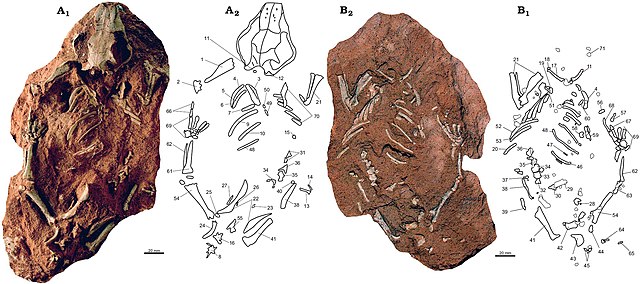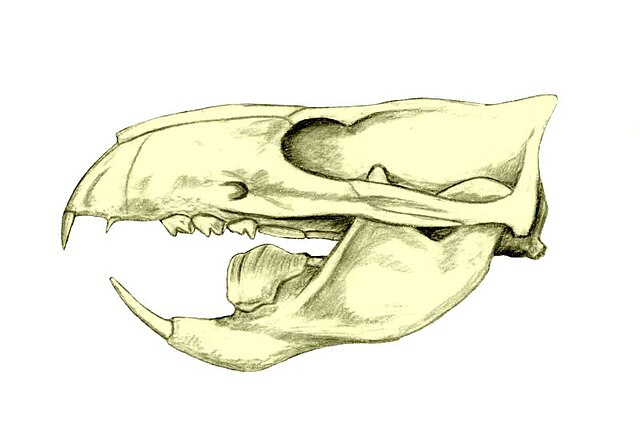Meniscoessus is a genus of extinct multituberculates from the Upper Cretaceous Period that lived in North America.
Meniscoessus
M. robustus tooth
M. robustus skull
Multituberculata is an extinct order of rodent-like mammals with a fossil record spanning over 130 million years. They first appeared in the Middle Jurassic, and reached a peak diversity during the Late Cretaceous and Paleocene. They eventually declined from the mid-Paleocene onwards, disappearing from the known fossil record in the late Eocene. They are the most diverse order of Mesozoic mammals with more than 200 species known, ranging from mouse-sized to beaver-sized. These species occupied a diversity of ecological niches, ranging from burrow-dwelling to squirrel-like arborealism to jerboa-like hoppers. Multituberculates are usually placed as crown mammals outside either of the two main groups of living mammals—Theria, including placentals and marsupials, and Monotremata—but usually as closer to Theria than to monotremes. They are considered to be closely related to Euharamiyida and Gondwanatheria as part of Allotheria.
Multituberculata
Restoration of Taeniolabis, the largest multituberculate at approximately 22 kg (49 lb).
Skull of Ptilodus. Notice the massive blade-like lower premolar.
Lower jaws and teeth of allodontid multituberculates







